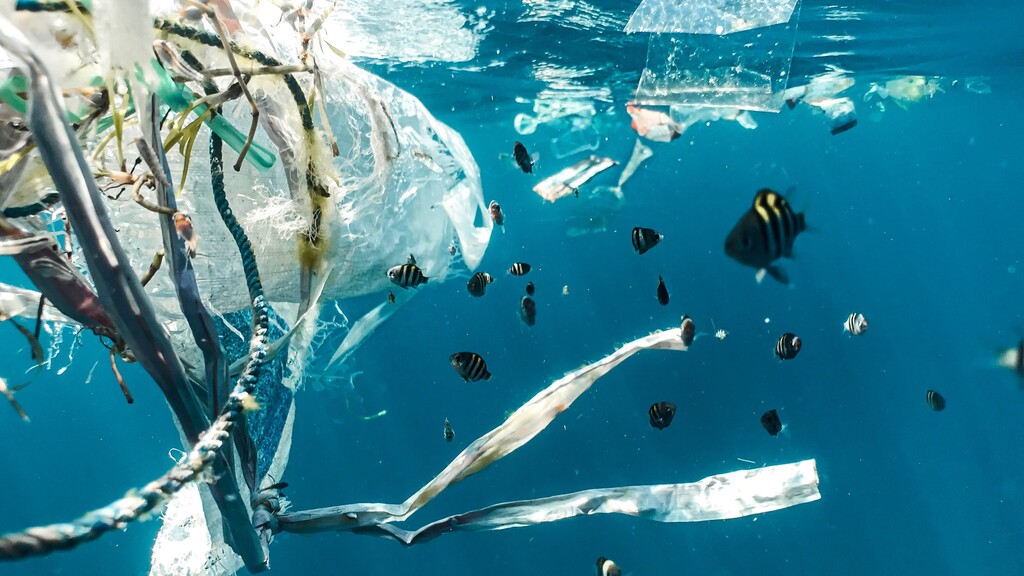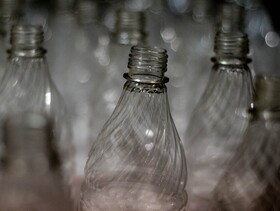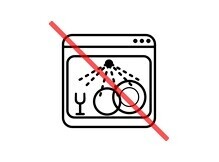


Whether in the form of electrical appliances, toys or food packaging, as writing and kitchen utensils, in the car or even as clothing. Even in our bodies and especially in the environment, components of plastics accumulate. Some of them are even very dangerous to health and new variants are invented whenever a substance is banned.
For the following overview of plastics and additives, we therefore make no claim to completeness.

PET is a polyester and is mainly used for films, food packaging or plastic bottles of all kinds (including PET beverage bottles). As PET-C it has a high (abrasion) strength and rigidity and is therefore installed in small electrical appliances or used for gears, rollers and furniture fittings.
By contrast, PET-A is used as a substrate for photographic films and magnetic tapes, writing foils and adhesive tape, as well as for electrical insulating films. However, PET is also used as a textile fiber because of its useful properties: It is wrinkle-free, tear-resistant, hardly stretchable and thus very resistant to deformation and it absorbs only very little water, which makes it easy to apply for example is well suited for sportswear.
Although PET does not contain phthalates, even if the name suggests, researchers from the University of Frankfurt found that estrogenic contamination of mineral water in PET beverage bottles was an issue. In addition, over time, PET releases harmful acetaldehyde (ethanal), which has been classified as carcinogenic by the World Health Organization.
Here, in everyday use, especially with disposable bottles caution is advised, because unlike reusable bottles contain no acetaldehyde blocker. However, acetaldehyde naturally also occurs in some foods, in alcohol, tobacco or as a flavoring.

Polyethylene is the most widely produced plastic in the world. It is used as a stable hard polyethylene PE-HD, which is characterized by a high density (HD), for example used for beverage crates, detergent bottles or pipes.
Due to its high resistance to salt solutions, alkalis and acids, polyethylene is very durable and not naturally degradable. Although it embrittles from solar radiation and then decomposes by weathering processes into small parts, but like all types of plastic organisms can not be further decomposed and therefore remains as a disruptive factor in the ecosystems and in the body.

Due to its durability and its high resistance, the brittle hard PVC is mainly used for durable products such as window frames, pipes or gutters. By adding different substances, PVC can also be varied in its elasticity. Thus, the addition of plasticizers (eg phthalates) results in supple and flexible soft PVC, which can be applied from floor coverings, vinyl wallpapers, hoses and cables to shower curtains, shoe soles and children's toys to cosmetics, food packaging and medication capsules extends. As a PVC paste, it can be applied to textiles, eg. B. for raincoats, or on foams in upholstery, be applied.
PVC brings with it some environmental and human health hazards from production to disposal. The production requires the toxic and carcinogenic vinyl chloride. In factories in which PVC is manufactured, therefore, high safety guidelines must be observed.
Another problem is the phthalates used for the production of soft PVC. These hormonally active substances are not firmly bound in the plastic and can therefore evaporate, washed out or rubbed off. They accumulate in the air, in the house dust or on the packaging in the food and can be absorbed by humans through the respiratory system, food or the skin into the body. Phthalates and their degradation products in the blood and urine could be detected in almost all people examined so far. Due to their estrogenic effect they can cause obesity, diabetes, cardiovascular disease and impaired sexual function and fertility. For example, a high phthalate burden in boys can have a negative effect on the number and quality of the sperm and can cause a malformation of the sexual organs. In girls, premature breast development was observed by estrogenic stress, as well as premature onset of puberty. In addition, PVC is suspected of being carcinogenic. However, phthalates also have a negative impact on the environment. For example, hybrid fish were discovered in rivers contaminated with phthalates. Soft PVC should therefore be avoided at all costs, especially in contact with children.
In addition, PVC does not rot and weather. However, reuse of PVC is difficult due to the various additives. Recyclable recycling is possible but leads to a loss of quality (downcycling). Most of the PVC gets to the landfill or is burnt to produce toxic dioxins.

The tough and ductile soft polyethylene LDPE, which has a low density, comes z. As for films, plastic bags, freezer bags or cable insulation for use.
Like PE-HD, LDPE is durable and not naturally biodegradable. Thus, if it is not thermally reused or recycled, it accumulates in the natural environment and thus poses a threat to the flora and fauna.

PP has higher hardness and stiffness than PE-HD and is also more heat resistant. Its field of application ranges from medical-technical articles, household electrical appliances and food packaging to toys and sporting goods to fibers for synthetic carpets, seat covers and sportswear.
Like PE, PP belongs to the group of polyolefins. The raw materials used for the production of polyolefins ethylene and propylene are highly flammable and explosive, but are considered relatively harmless to health and the environment. Compared to other plastics, they contain less harmful additives, are environmentally neutral at the landfill, do not release any pollutants into the environment and have a significantly lower potential for the formation of dioxins during combustion. In addition, PP is associated with less technical problems and recycling costs. PE and PP are therefore suitable in the medium term for replacing other plastics such as PVC. In the long term, however, they should also be avoided or replaced by materials from renewable raw materials, as PP can not be degraded in the environment.

The stable polystyrene is used for many consumer products, such. As CD cases or hangers, but also for food packaging, such as yogurt cups used. However, it is more commonly used as foamed polystyrene and thus serves as an insulating material or packaging material. In agriculture, the stable polystyrene is used for soil loosening.
In the production of PS, the toxic benzene and the genotype changing styrene are used. The released styrene vapors irritate airways, eyes and mucous membranes. Foamed polystyrene does not decompose and can accumulate in the environment. Although it is completely recyclable, however, the corresponding machines are not yet widespread and the Styrofoam is therefore often burned. To prevent this, larger amounts of packaging polystyrene should be delivered to recycling depots and smaller polystyrene packaging should be thrown into the yellow bag.

Due to its high strength, transparency, rigidity and hardness, PC has a wide range of applications. So it is used for protective helmets, visors and eyeglass lenses as well as for the housing of mobile phones and computers or even for aircraft windows or burglar-proof glazing. In addition, polycarbonates have good electrical insulation properties and high heat and radiation resistance, which is why they are used in the manufacture of electrical appliances and parts, lighting covers, CDs and DVDs and microwave dishes and other heat-resistant vessels, such as babybottles.
Some polycarbonates are made from the hormonal Bisphenol A (BPA), which has been shown to escape from the plastic to the environment. BPA is found in the air, in house dust or even in food that has been packed with a PC or heated with PC harnesses. Like phthalates, BPA also has an estrogenic effect, which can manifest itself in diabetes, cardiovascular disease, breast and genital cancer or a limitation of reproductive ability. In the womb it affects the brain and organ development of the fetus. It is also considered a cause of hyperactivity. As studies have shown, BPA already intervenes in small amounts in the hormone system. Since 2011, it has been banned in baby bottles throughout the EU.

Bisphenol A (BPA) is one of the oldest and best studied chemical additives in plastics. Already at the end of the 19th century BPA was first produced and was for a while as an estrogen replacement in conversation. Although the estrogenic effect of BPA is there, it is too weak for estrogen therapy.
Today BPA is an important starting material for the production of polymer plastics. BPA is thus contained in many plastic objects. In addition, BPA is added to plasticizers to prevent unwanted oxidation.
Numerous, partly contradictory studies and statements accompany the use of BPA. The European Commission alone made many changes. In 2003, in its risk assessment, it came to the conclusion that BPA poses no threat to consumers as long as plastic is used properly.
For proper use, however, it should not be heated. This happens, for example, in the dishwasher. During the rinse, BPA is removed from the plastic and distributed throughout the rinse water. All other dishes come into contact with the rinse water and the subsequent drying leaves a fine film including BPA back. In short, any time plastic gets into the dishwasher, the use of BPA may not be safe, as assessed by the European Commission.
Nevertheless, in 2007, the European Food Safety Authority (EFSA) increased the limit value for BPA from 10 μg per kg body weight per day to 50 μg / kg per day. The migration value, which determines how much BPA a food may take up by contact with the packaging, was therefore 3 mg / kg. The accumulation of BPA's in human bodies through the use of various plastic packaging products apparently were not considered.
As of September 2010, EFSA reaffirms its position on BPA. However, just two months later, in November 2010, the EU's Standing Committee on the Food Chain and Animal Health announced that, as of 1 March 2011, the production and from 1 june 2011 the sale of baby bottles made of polycarbonate containing BPA is prohibited.
In particular, changes in the brains of toddlers and fetuses due to BPA were increasingly considered probable. In France, therefore, since 2013, a ban on BPA in all food packaging for infants. From July 2015, there will no longer be food packaging in France containing BPA.
Further research finds a link between the recordings of BPA in the human body with various diseases, including cardiovascular problems, diabetes, lower sperm count, obesity and ... here we come to the initially mentioned libido ... reduced sexual desire in men ,
Maybe men should rather sell plastic bottles instead of tiger hunting? A cheeky comment is allowed ....
There are also studies that raise concerns about BPA, for example National Toxicology Program, National Institute of Environmental Health Sciences, Risk Assessment Committee of the European Chemicals Agency, Ecole Nationale Supérieure Agronomique de Toulouse, Chemtrust et al. a.